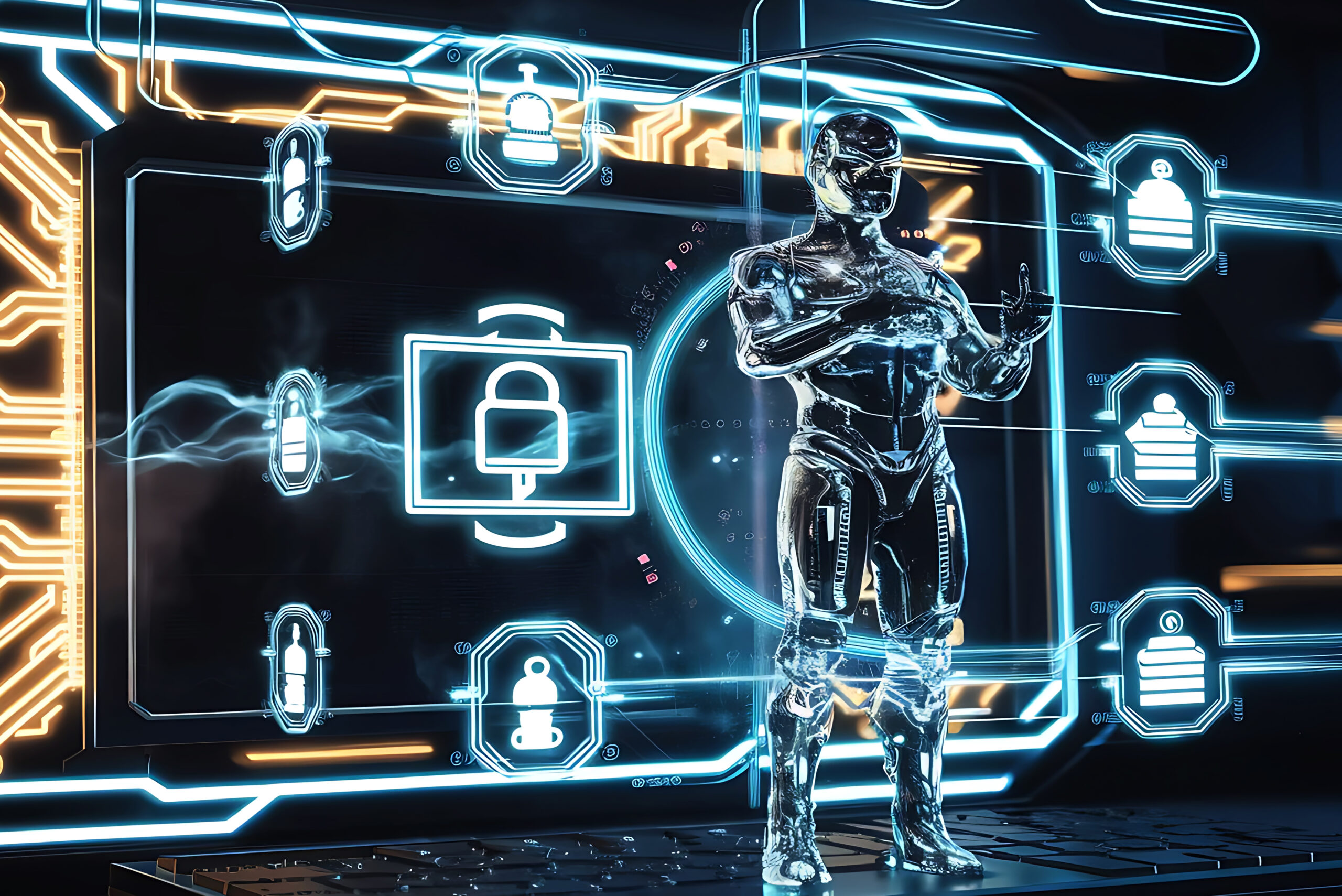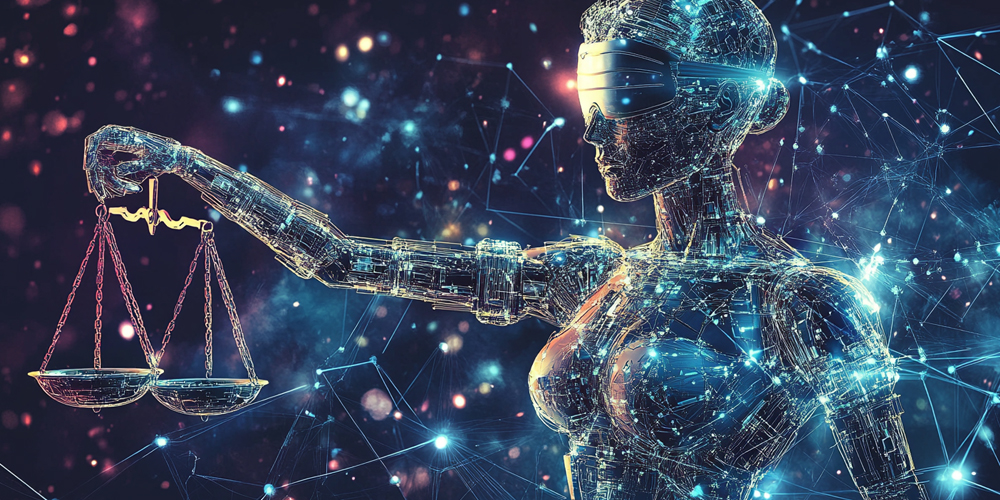Introduction to AI in Cybersecurity
The integration of AI in cybersecurity has revolutionized the way organizations detect, respond, and mitigate cyber threats. By leveraging advanced machine learning algorithms, AI enhances the security landscape, enabling proactive defense measures against an ever-evolving array of cyber threats. This section delves into the various applications and technologies where AI significantly impacts cybersecurity strategies.
Threat Detection and Response
One of the primary applications of AI in cybersecurity is its capacity to identify and respond to threats in real-time. Traditional security systems often rely on defined patterns or signatures to detect malware and attacks, which leaves them vulnerable to sophisticated, novel threats. In contrast, AI-powered systems analyze vast amounts of data to uncover unusual patterns of behavior or anomalies in network traffic.
For instance, security solutions like IBM’s Watson for Cyber Security utilize natural language processing and machine learning to evaluate both structured and unstructured data, enabling organizations to prioritize threats based on their severity and relevance. This capability allows for a more effective early warning system, facilitating swift and informed responses.
Behavioral Analytics
Another compelling application of AI in cybersecurity is through behavioral analytics. Machine learning algorithms monitor user and entity behaviors across the network to create a baseline of normal activity. Deviations from this baseline, such as unusual login times or data access patterns, can trigger alerts or automated responses.
For example, tools used in insider threat detection employ AI to assess employee behaviors continuously. If an employee suddenly accesses sensitive data they typically do not interact with, the system can flag this as suspicious, prompting further investigation before potential damage occurs.
Automated Threat Hunting
AI technologies are also instrumental in automating threat hunting processes. By using AI-driven analytics tools, security teams can shift from a purely reactive strategy to a more proactive one, seeking out potential threats before their manifestations. These tools utilize algorithms to sift through logs and records far more efficiently than human analysts, identifying potential vulnerabilities and weak spots that require immediate attention.
Companies like Darktrace employ AI to autonomously detect and respond to cyber threats. Their self-learning technology operates without predefined rules, adapting to the organization’s unique environment and continuously improving its detection capabilities over time.
Phishing Detection
Another critical application of AI in cybersecurity is in combating phishing attacks. AI algorithms can analyze incoming emails’ content, sender information, and context to determine their legitimacy. This helps organizations prevent malicious links or attachments from reaching end-users.
Solutions like Microsoft Defender use machine learning to scan and identify phishing attempts by evaluating email characteristics, thereby enhancing user safety continuously. They can adapt quickly to new phishing tactics as they emerge, maintaining a strong defense against these prevalent cyber threats.
Vulnerability Management
AI in cybersecurity also supports vulnerability management efforts by automating the scanning and prioritization of vulnerabilities based on potential impact. AI-driven tools can simulate attacks to assess the effectiveness of existing security measures and uncover weaknesses that human assessment might miss.
Platforms such as Qualys and Tenable leverage AI to enhance vulnerability assessments, improve remediation workflows, and consistently evaluate system security postures, helping organizations maintain robust defenses against external intrusions.
Conclusion
The applications of AI in cybersecurity are vast and continually evolving. With AI’s ability to analyze and learn from data at an unprecedented scale, organizations are better equipped to anticipate, identify, and neutralize cyber threats. As the cybersecurity landscape evolves, the incorporation of AI will undoubtedly become increasingly critical to safeguarding sensitive information and maintaining the integrity of digital environments.
Understanding AI Techniques in Cybersecurity
Artificial Intelligence (AI) has transformed various domains, and one of the most critical areas it impacts is cybersecurity. AI in cybersecurity refers to the utilization of advanced AI techniques and technologies to protect networks, systems, and data from cyber threats. These methods enhance the ability to predict, detect, and respond to security incidents more effectively than traditional approaches.
Key AI Techniques in Cybersecurity
Several AI techniques play a fundamental role in bolstering cybersecurity defenses. Below are some of the most significant:
- Machine Learning (ML): ML algorithms analyze vast amounts of data to identify patterns and anomalies associated with cyber threats. For example, ML can be trained to recognize normal network traffic and flag any deviations that may indicate a breach.
- Deep Learning: A subset of ML, deep learning employs neural networks with multiple layers. It’s especially useful for complex threat detection, such as identifying sophisticated ransomware attacks that may go unnoticed by traditional systems.
- Natural Language Processing (NLP): NLP enables machines to understand and interpret human language. In cybersecurity, it can be used for threat intelligence, where it analyzes data from diverse sources such as social media, forums, and dark web communications to identify emerging threats.
- Anomaly Detection: This technique focuses on identifying unusual patterns that differ significantly from the expected behavior in data. For instance, if a user accesses sensitive data at an odd hour, anomaly detection systems can flag this activity for further investigation.
Applications of AI in Cybersecurity
AI in cybersecurity encompasses a wide variety of applications that enhance threat detection and response:
- Intrusion Detection Systems (IDS): AI-powered IDS utilize machine learning algorithms to monitor network traffic for unusual patterns that indicate a potential intrusion.
- Malware Detection: AI technologies can analyze files and applications to determine if they exhibit malicious characteristics, significantly speeding up the detection process compared to conventional antivirus solutions.
- Phishing Detection: Using NLP, AI can assess emails and communications for signs of phishing attempts, examining various factors such as sender reputation, language cues, and embedded links.
- User Behavior Analytics (UBA): AI tools can create a baseline of normal user behavior and monitor for deviations that may suggest compromised accounts or insider threats.
Real-World Examples of AI in Cybersecurity
Various organizations have adopted AI in cybersecurity to mitigate risks effectively. Here are a few noteworthy examples:
- Darktrace: This cybersecurity company utilizes machine learning algorithms to create an “enterprise immune system” that detects and responds to insider threats and anomalies in real-time.
- Cylance: Cylance uses AI to analyze file metadata and behaviors, enabling it to predict and prevent potential cyber threats before they can execute harmful actions.
- IBM Watson for Cyber Security: IBM’s AI platform employs NLP to sift through immense volumes of unstructured data to provide analysts with actionable intelligence regarding emerging cyber threats.
Benefits of Implementing AI in Cybersecurity
The implementation of AI technologies brings numerous advantages to the field of cybersecurity:
- Speed: AI systems can process and analyze data at speeds far exceeding human capabilities, allowing for quicker response times to potential threats.
- Accuracy: By minimizing human error, AI can reduce false positives and improve the overall accuracy of threat detection.
- Scalability: AI solutions can easily scale to manage the increasing volume of data and threats faced by organizations today.
- Proactive Defense: AI allows organizations to move from a reactive to a proactive stance in cybersecurity, continuously learning from threats and adjusting defenses accordingly.
Challenges and Considerations
While the adoption of AI in cybersecurity has many benefits, it is not without its challenges:
- Data Quality: The effectiveness of AI relies heavily on the quality of data used for training algorithms. Poor-quality data can lead to ineffective threat detection.
- Adversarial AI: Cybercriminals can use AI to devise more advanced attack strategies, creating a constant battle between security technologies and malicious actors.
- Ethics and Privacy: AI systems that analyze personal data must address privacy concerns and ethical considerations to ensure compliance with regulations and maintain user trust.
AI in Cybersecurity Training and Development
Understanding AI in Cybersecurity
AI in cybersecurity refers to the application of artificial intelligence technologies to enhance the detection and response to cyber threats. As cyber attacks become more sophisticated, traditional training methods are often insufficient. AI-driven training solutions provide dynamic, adaptive learning environments that better prepare cybersecurity professionals for emerging threats.
Benefits of AI in Cybersecurity Training
Implementing AI in cybersecurity training offers numerous advantages:
- Personalized Learning: AI systems can analyze individual performance and adapt training modules accordingly, ensuring that each learner receives the content most relevant to their skill level and learning pace.
- Real-time Feedback: AI-powered platforms can provide instant feedback during training exercises, allowing users to correct mistakes and improve their skills on the spot.
- Scalability: AI solutions can scale training resources to accommodate a growing workforce, making it easier for organizations to train multiple employees simultaneously.
- Enhanced Threat Simulations: AI can simulate complex cyber attack scenarios, providing trainees with hands-on experience in identifying and responding to various threats.
AI-Powered Training Tools
Several innovative tools employ AI in cybersecurity training, helping organizations to enhance their educational offerings:
- Intelligent Learning Platforms: Systems like Cybrary and ThreatConnect leverage AI to curate personalized learning paths and adjust difficulty levels based on user engagement and performance.
- Automated Threat Simulation: Tools such as AttackIQ and RangeForce use AI to create realistic cyberattack simulations that enable professionals to practice and refine their response strategies in a safe environment.
- Chatbots and Virtual Assistants: AI-driven chatbots can assist trainees by answering questions, providing resources, and guiding them through complex topics in real-time.
Case Studies and Real-World Applications
Numerous organizations have successfully integrated AI into their cybersecurity training programs:
- IBM: IBM has developed software tools that utilize AI to analyze threat intelligence data and create tailored training scenarios for cybersecurity professionals. This effectively prepares them to handle current and future cyber threats.
- Microsoft: Microsoft’s Cybersecurity Reference Architecture incorporates AI technologies to provide interactive training modules that mimic real-world cyber threats, enhancing employees’ readiness to combat attacks.
Challenges and Considerations
While the benefits of AI in cybersecurity training are significant, organizations must also be mindful of certain challenges:
- Data Privacy: Handling sensitive information and training data requires stringent adherence to privacy laws and regulations.
- Bias in AI Algorithms: If the AI models are trained on biased data, they may produce skewed results, impacting the quality of the training.
- Continuous Learning: Cyber threats evolve rapidly, necessitating continual updates to training programs and AI algorithms to remain effective.
Future of AI in Cybersecurity Training
The future of AI in cybersecurity training appears promising. As AI technologies continue to advance, we can expect even more sophisticated training methods, including:
- Integration with Machine Learning: Enhanced machine learning algorithms will improve the accuracy of threat simulations and the customization of training content.
- AR and VR Applications: The use of augmented reality (AR) and virtual reality (VR) could revolutionize training environments, making scenarios more immersive and realistic.
- Collaborative Learning Platforms: Future tools may facilitate collaboration between professionals in different organizations, sharing insights and experiences in a collective training environment.
Conclusion
In conclusion, AI in cybersecurity training and development represents a crucial evolution in how organizations approach cybersecurity education. By leveraging the capabilities of AI, companies can prepare their workforce to effectively combat the evolving landscape of cyber threats, ensuring not only compliance but also proactive defense measures against potential breaches.
AI-Powered Cybersecurity Tools
Introduction to AI in Cybersecurity
Artificial intelligence (AI) has become a crucial component in modern cybersecurity strategies. With the increasing complexity and volume of cyber threats, traditional methods alone are often inadequate for protecting sensitive information. AI in cybersecurity uses advanced algorithms and machine learning techniques to enhance the security landscape, automate processes, and improve threat detection.
Benefits of AI in Cybersecurity
Integrating AI into cybersecurity offers several significant advantages:
- Enhanced Threat Detection: AI systems can analyze vast amounts of data in real-time, identifying patterns and anomalies that could indicate potential threats.
- Automated Response: AI can automate responses to certain types of threats, allowing for quicker remediation and reducing the impact of attacks on organizations.
- Predictive Analytics: By utilizing historical data, AI models can predict potential future threats, enabling organizations to be proactive rather than reactive.
- Reduced Human Error: AI technology minimizes the risk of human errors, which are a significant factor in many security breaches. This benefit is highlighted in various fields, including medicine, where AI systems have been shown to reduce errors considerably.
Key AI-Powered Cybersecurity Tools
Numerous tools and platforms leverage AI capabilities to bolster cybersecurity efforts. Here are a few notable examples:
1. Darktrace
Darktrace utilizes machine learning algorithms to detect and respond to cyber threats in real-time. By mimicking the human immune system, it can autonomously identify and neutralize emerging threats before they cause harm.
2. CrowdStrike
CrowdStrike employs AI-driven threat intelligence to provide active monitoring and response services. Their Falcon platform automates the detection of advanced persistent threats and works to remediate attacks proactively.
3. Cylance
Cylance uses AI to predict and prevent cyber threats by analyzing file behaviors and characteristics before execution. This proactive approach significantly reduces the risk of malware infections.
Challenges and Considerations
Despite the advantages, integrating AI in cybersecurity comes with its own set of challenges:
- Data Privacy: The use of AI often requires access to large datasets, which raises concerns regarding data privacy and compliance with regulations.
- Adversarial Attacks: Cybercriminals can exploit weaknesses in AI systems, creating adversarial examples that manipulate algorithms to bypass security measures.
- False Positives: AI systems can sometimes misidentify benign behavior as malicious, leading to unnecessary alerts and potential response fatigue.
The Future of AI in Cybersecurity
As cyber threats continue to evolve, AI in cybersecurity will play a pivotal role in shaping the future of digital safety. Innovations will likely focus on enhancing AI’s capabilities to learn from new types of attacks, improving the accuracy of its threat detection, and developing more robust defensive mechanisms.
Organizations must continually adapt and evolve their cybersecurity strategies by incorporating AI-driven capabilities to stay ahead of cybercriminals. The collaboration between human expertise and machine intelligence will be essential to creating resilient cybersecurity frameworks.
Enhancing Threat Detection
AI in cybersecurity significantly improves threat detection capabilities by analyzing vast amounts of data in real-time. Traditional security systems often rely on predefined rules and signatures to identify threats, which can be insufficient against sophisticated attacks. In contrast, AI algorithms can learn from historical data, identifying patterns and anomalies that may indicate malicious activities.
For example, machine learning models can classify network traffic as normal or abnormal, enabling organizations to spot potential intrusions much faster than manual analysis. A report from IBM indicates that organizations using AI-based systems can detect breaches at least 60% faster than those relying on traditional methods.
Automating Responses to Incidents
Another key benefit of AI in cybersecurity is its ability to automate responses to security incidents. In the event of a detected threat, AI systems can initiate predefined responses such as isolating affected systems, blocking malicious IP addresses, or deploying patches without human intervention. This rapid response reduces the window of exposure and minimizes the potential damage from cyber attacks.
For instance, companies can configure AI-driven security systems to automatically contain a detected phishing attack by blocking URLs or emails suspected of being malicious, thereby preventing employee interaction with the threat.
Reducing False Positives
AI in cybersecurity also plays a crucial role in reducing false positives. Conventional security systems often generate a high volume of alerts, many of which are benign. This can lead to alert fatigue, where security professionals may overlook genuine threats due to the overwhelming number of notifications.
AI technologies, particularly those using advanced algorithms and natural language processing, can significantly enhance the accuracy of threat identification. By analyzing the context and behavior of potential threats, AI can prioritize alerts based on their severity, thus allowing teams to focus on the most critical issues. For example, Darktrace’s AI technology has shown the ability to accurately differentiate between legitimate activity and actual threats, cutting false positives by as much as 80%.
Continuous Learning and Adaptation
One of the most remarkable features of AI in cybersecurity is its continuous learning ability. Cyber threats are constantly evolving, and AI systems can adapt to new techniques and methods employed by attackers. This adaptability is critical for maintaining a strong security posture in an ever-changing landscape.
AI models can be trained on new data sets to recognize the latest vulnerabilities and tactics used in cyberattacks. This means that while traditional systems may become obsolete, AI-driven platforms can stay ahead of threats by incorporating insights gained from previous incidents. For example, security solutions like CrowdStrike leverage AI to evolve dynamically, ensuring they can thwart new forms of attacks as they emerge.
Improving Incident Prediction
Moreover, AI in cybersecurity enhances incident prediction capabilities. By leveraging historical data and advanced predictive analytics, AI platforms can forecast potential vulnerabilities and attack points. This proactive approach allows organizations to address security weaknesses before they can be exploited.
For instance, using AI to analyze user behavior can help identify unusual patterns suggesting insider threats or compromised accounts, allowing security teams to investigate and take preemptive measures. A study from McKinsey highlights that organizations employing predictive analytics can reduce their risk exposure significantly, creating a more robust security environment.
Enhancing Compliance and Reporting
Finally, AI in cybersecurity streamlines compliance and reporting processes. Companies must comply with various regulatory requirements, which can be cumbersome without automated systems to manage data and audits. AI can simplify these tasks by monitoring compliance in real-time and generating reports automatically.
For example, AI platforms can track user access and data handling to ensure compliance with regulations like GDPR or HIPAA, making it easier for organizations to adhere to legal standards and avoid penalties.
Understanding AI in Cybersecurity
Artificial Intelligence (AI) in cybersecurity refers to the use of advanced algorithms and machine learning techniques to detect, prevent, and mitigate cyber threats. With the increasing sophistication of cyber attacks, integrating AI into cybersecurity measures has become essential for organizations to protect their digital assets.
Best Practices for Implementing AI in Cybersecurity
1. Prioritize Data Quality
AI systems rely heavily on data to learn and make decisions. Ensuring high-quality, relevant, and clean data is critical to the success of AI in cybersecurity. Organizations should regularly update their datasets and remove any outdated information. Example: Incorporating real-time threat intelligence can enhance AI’s ability to identify emerging threats.
2. Continuous Learning and Improvement
AI algorithms need to evolve alongside emerging threats. Implementing continuous learning mechanisms allows AI systems to adapt and improve over time. Regularly retraining AI models with new datasets can lead to better detection rates and reduced false positives.
3. Combine AI with Human Expertise
While AI can analyze vast amounts of data, human expertise is still invaluable. Collaborating human analysts with AI tools creates a hybrid approach that leverages the strengths of both. Human intuition can interpret complex scenarios that AI may not fully understand. Example: Security analysts can review AI findings to provide context and make informed decisions.
4. Ensure Transparency and Explainability
Using AI in cybersecurity should come with an understanding of decision-making processes. Ensuring transparency allows organizations to audit AI actions and builds trust among stakeholders. Implementing explainable AI can clarify why certain threats are flagged, aiding analysts in response efforts.
5. Maintain Robust Security Protocols
The introduction of AI in cybersecurity should not bypass fundamental security protocols. Organizations must ensure that the AI tools themselves are secure and that they are integrated into a broader cybersecurity strategy. Regular security assessments and pen tests can help identify vulnerabilities that AI might miss.
6. Utilize Threat Modeling Techniques
Applying threat modeling techniques helps in understanding potential attack vectors and threats. By using AI to simulate various attack scenarios, organizations can proactively identify weaknesses in their systems. This approach enables the preparation of targeted security measures relevant to the specific threats.
7. Establish Incident Response Plans
Even with the best AI in cybersecurity, breaches can still occur. Organizations should have predefined incident response plans that incorporate AI tools. These plans can guide teams on how to leverage AI-driven insights during an incident, ensuring a swift and effective response.
8. Focus on Regulatory Compliance
Integrating AI into cybersecurity must also align with legal and regulatory requirements. Organizations should regularly review compliance standards and ensure that AI deployments do not inadvertently breach data protection laws, such as GDPR or HIPAA. Staying compliant not only protects data but also strengthens the organization’s reputation.
9. Foster a Culture of Cyber Awareness
AI can enhance security measures, but the human element is always a key factor in cybersecurity. Encouraging a culture of cybersecurity awareness within the organization helps employees understand the importance of adhering to security protocols and recognizing potential threats.
10. Evaluate and Adjust AI Solutions Regularly
Technology and threat landscapes are constantly evolving. Organizations should regularly evaluate the effectiveness of their AI solutions in cybersecurity. Metrics such as detection rates, response times, and the number of false positives should be reviewed and adjusted as necessary to optimize performance.
Conclusion
Incorporating best practices for AI in cybersecurity is crucial for effectively leveraging artificial intelligence to protect against cyber threats. By focusing on data quality, continuous learning, collaboration with human experts, transparency, and compliance, organizations can enhance their cybersecurity posture significantly.
Understanding the Challenges of AI in Cybersecurity
The integration of AI in cybersecurity presents a unique set of challenges that security professionals must navigate. One primary challenge is the quality of data used to train AI models. For AI systems to be effective, they need access to large volumes of high-quality, labeled data. However, obtaining this data can be difficult, especially when dealing with new and evolving cyber threats that have not yet been cataloged. Poor-quality data can lead to inaccurate predictions and misclassifications, undermining the effectiveness of AI-driven security solutions.
Another significant challenge is overfitting. This occurs when an AI model is too complex and captures noise in the training data rather than the underlying pattern. For example, if an AI model is trained on limited types of cyber attacks, it may perform exceptionally well on that particular dataset but fail when confronted with novel threats. This could result in security teams being blindsided by new attack vectors that the AI could not recognize.
Risks Associated with AI in Cybersecurity
While AI can automate and enhance many cybersecurity tasks, it also introduces substantial risks. One of the most concerning risks is adversarial attacks. Cybercriminals can exploit vulnerabilities in AI systems by feeding them misleading or malicious input designed to trick the algorithms. For instance, a slight alteration of a file can make it undetectable by an AI system, thereby bypassing security measures. This underscores the importance of ongoing assessments and updates for AI systems to ensure their resilience against such tactics.
Moreover, reliance on AI can create a sense of false security, leading organizations to overlook traditional security practices. If teams become overly dependent on AI in cybersecurity, they might neglect regular updates, audits, and human oversight that are critical in a holistic security strategy. This can leave vulnerabilities exposed and create an environment where threats can flourish unnoticed.
Ethical and Legal Implications
The deployment of AI in cybersecurity also raises ethical and legal concerns, especially regarding privacy and data protection. AI systems often require access to extensive amounts of data, raising questions about how that data is collected, used, and stored. Organizations must be transparent in their operations and ensure compliance with regulations such as GDPR, which mandates a legal framework around data privacy. Improper handling of sensitive data not only leads to legal ramifications but can also damage public trust.
Challenges in Integration and Collaboration
Integrating AI into existing cybersecurity frameworks poses another challenge. Organizations may encounter difficulties in aligning AI systems with their current technologies and practices. Integration issues can result in gaps in security measures, making it essential for organizations to conduct thorough assessments and possibly overhaul their cybersecurity architecture to accommodate new AI capabilities.
Furthermore, there can be a lack of collaboration between IT and security teams. Successful deployment of AI in cybersecurity requires input from both areas to ensure that AI tools satisfy operational needs while addressing security threats. Fostering collaboration is crucial to leverage the strengths of AI while maintaining a robust and responsive security posture.
Conclusion: Continuing Education and Adaptation
Continuous education and adaptation are key in mitigating the challenges and risks associated with AI in cybersecurity. As AI technologies evolve, organizations must stay informed about best practices, emerging threats, and regulatory requirements. Regular training for cybersecurity professionals on AI applications and technologies will help ensure that teams are prepared to effectively manage the complex landscape of threats in the digital realm.
Future of AI in Cybersecurity
Enhanced Threat Detection
The future of AI in cybersecurity is poised to revolutionize how organizations detect and respond to threats. Traditional security systems often struggle with recognizing sophisticated attack patterns, but AI can analyze vast quantities of data in real time. For instance, machine learning algorithms can learn from historical incident data to identify anomalies that may indicate potential breaches.
Tools like Darktrace leverage AI technologies to provide autonomous response capabilities, allowing organizations to act swiftly against threats as they emerge. By continuously learning from network behavior, these systems can adapt to new attack vectors, improving overall cybersecurity posture.
Automated Incident Response
AI in cybersecurity will significantly enhance automated incident response strategies. Current approaches often require manual intervention, leading to delays in addressing threats. Using AI-driven solutions, organizations can develop automated workflows that enable systems to react to incidents in real time.
For example, platforms such as Splunk employ AI to correlate various data sources, thereby facilitating quicker and more effective responses to security threats. Automated playbooks can ensure that known vulnerabilities are patched without human delay, significantly reducing the window of exposure.
Predictive Analytics for Threat Intelligence
Another promising aspect of the future of AI in cybersecurity is predictive analytics. AI can sift through data from diverse sources—like dark web monitoring and threat intelligence feeds—to forecast potential attack trends and vulnerabilities.
By applying predictive models, organizations can proactively strengthen their defenses against anticipated threats. For example, Recorded Future uses AI to analyze threat data, helping organizations stay ahead of cybercriminals by identifying emerging threats before they materialize into actual attacks.
Improved User Authentication and Behavioral Analysis
AI will also enhance user authentication mechanisms and behavioral analysis. Traditional username-password combinations are increasingly inadequate in securing sensitive systems. AI enables the development of advanced authentication methods such as biometric verification and adaptive risk-based authentication.
With solutions like Cylance, organizations can analyze user behavior patterns to detect suspicious activities. If a user’s actions deviate from their established behavior, the system can trigger remediation measures, such as multi-factor authentication or restricting access until the anomaly is resolved.
Challenges and Ethical Considerations
While the future of AI in cybersecurity is bright, it is not without challenges. The complexity of AI systems necessitates careful implementation and constant monitoring to mitigate biases and ensure fairness. Moreover, malicious actors are also employing AI technologies to devise more sophisticated attacks.
Organizations must remain vigilant and ethical is leveraging AI. Implementing robust governance frameworks will be essential to balance the benefits of AI in cybersecurity with potential risks. This includes establishing guidelines on data privacy, accountability, and transparency in AI-driven decisions.
Conclusion: A Collaborative Future
The future of AI in cybersecurity is not about replacing human expertise but rather enhancing it. By providing security professionals with advanced tools to analyze, predict, and respond to threats, AI can empower teams to focus on strategic aspects of cybersecurity. As technology evolves, a collaborative approach that combines both human insight and AI capabilities will be vital in creating resilient cybersecurity infrastructures.
Understanding AI in Cybersecurity
AI in cybersecurity refers to the implementation of artificial intelligence technologies to enhance the defense mechanisms against cyber threats. With cybercriminals leveraging sophisticated tools and techniques, AI has emerged as a crucial element in helping organizations detect, respond to, and mitigate potential security breaches.
Benefits of AI in Cybersecurity
AI in cybersecurity offers numerous advantages that make it an indispensable tool for both large enterprises and small businesses. Some of the primary benefits include:
- Real-time threat detection: AI algorithms can analyze vast amounts of data and identify patterns indicative of cyber threats in real-time, allowing for quicker responses and mitigations.
- Predictive capabilities: By analyzing historical attack data, AI can predict potential vulnerabilities and cyber attack vectors, enabling proactive measures to prevent breaches.
- Automated threat responses: AI systems can automate responses to detected threats, reducing the workload on human security teams and allowing for faster containment of incidents.
Examples of AI in Cybersecurity
Several organizations have already begun to implement AI in cybersecurity, showcasing its effectiveness:
- CrowdStrike: This cybersecurity firm employs AI to provide endpoint protection that detects and responds to sophisticated threats. Their platform uses machine learning algorithms to analyze behavior patterns and identify anomalies indicative of cyber attacks.
- Darktrace: Darktrace uses AI-driven technology to establish an “immune system” for digital environments. It learns the unique behavior of users and devices within a network and can autonomously respond to emerging threats in real-time.
Challenges in Implementing AI in Cybersecurity
Despite its benefits, implementing AI in cybersecurity comes with challenges:
- Data quality: Effective AI models depend on high-quality and extensive datasets. Poor data quality can lead to inaccurate threat detection.
- Adversarial AI: Cybercriminals can utilize AI to develop sophisticated attacks designed to exploit the weaknesses in AI systems, making it crucial for cybersecurity teams to stay ahead of these evolving tactics.
- Integration with existing systems: Organizations may struggle to integrate AI solutions with their current cybersecurity frameworks, requiring additional resources and training.
Future Implications of AI in Cybersecurity
The future of AI in cybersecurity appears promising as technology continues to advance:
- Enhanced machine learning: The integration of advanced machine learning techniques will allow AI systems to become even more adept at identifying and neutralizing threats.
- Collaboration between AI and human analysts: The combination of AI’s capability to process data at scale and human analysts’ expertise will create a more robust cybersecurity framework.
- User behavior analytics: AI can analyze user behaviors to detect insider threats and potential breaches caused by compromised accounts.
Conclusion
The significance of AI in cybersecurity cannot be overstated. As cyber threats continue to evolve, leveraging AI technologies will be essential for organizations striving to safeguard their digital assets and maintain data integrity. Its advantages in real-time detection, predictive capabilities, and automated responses provide a powerful arsenal against a backdrop of increasing cyber risks.








